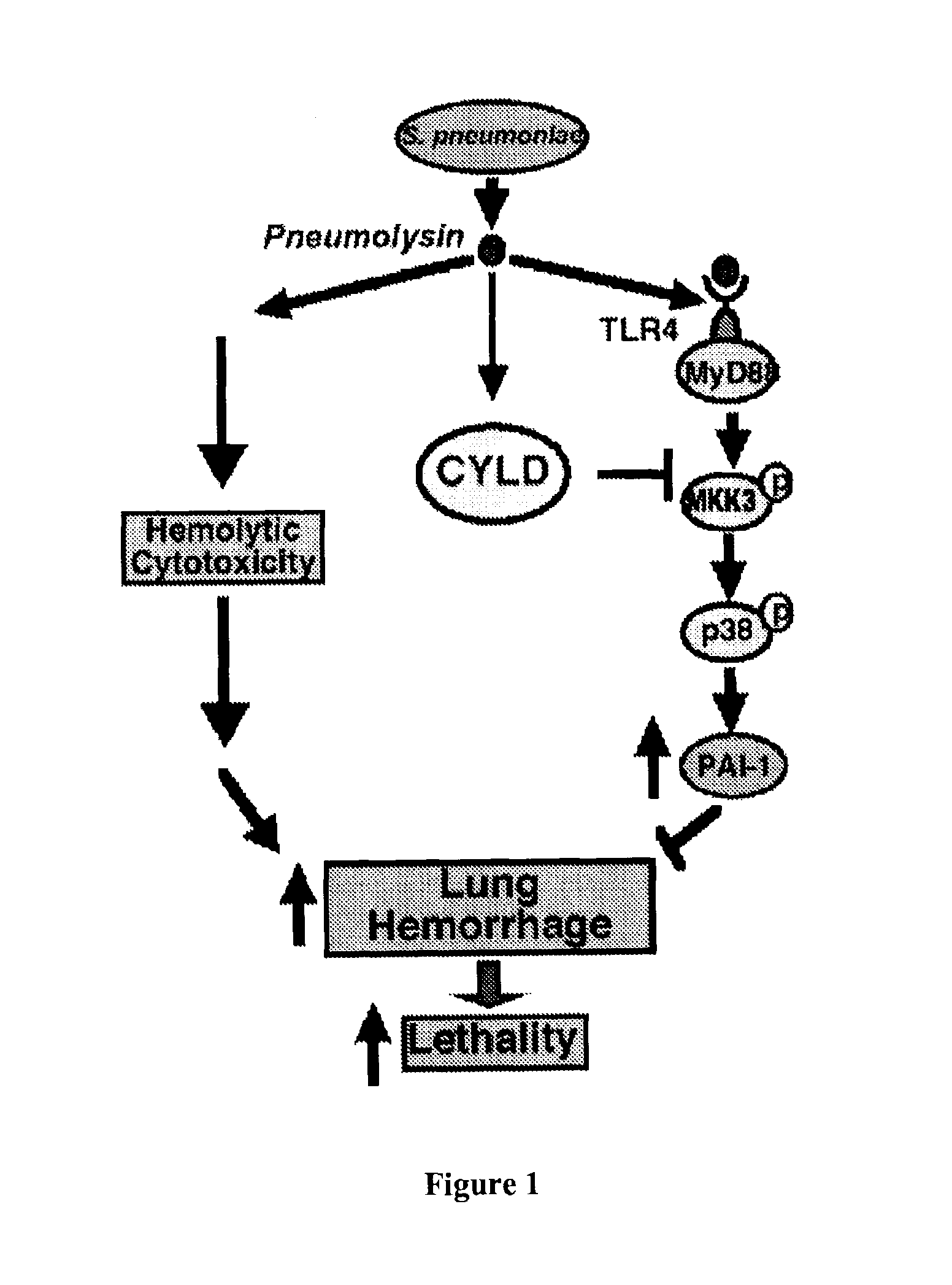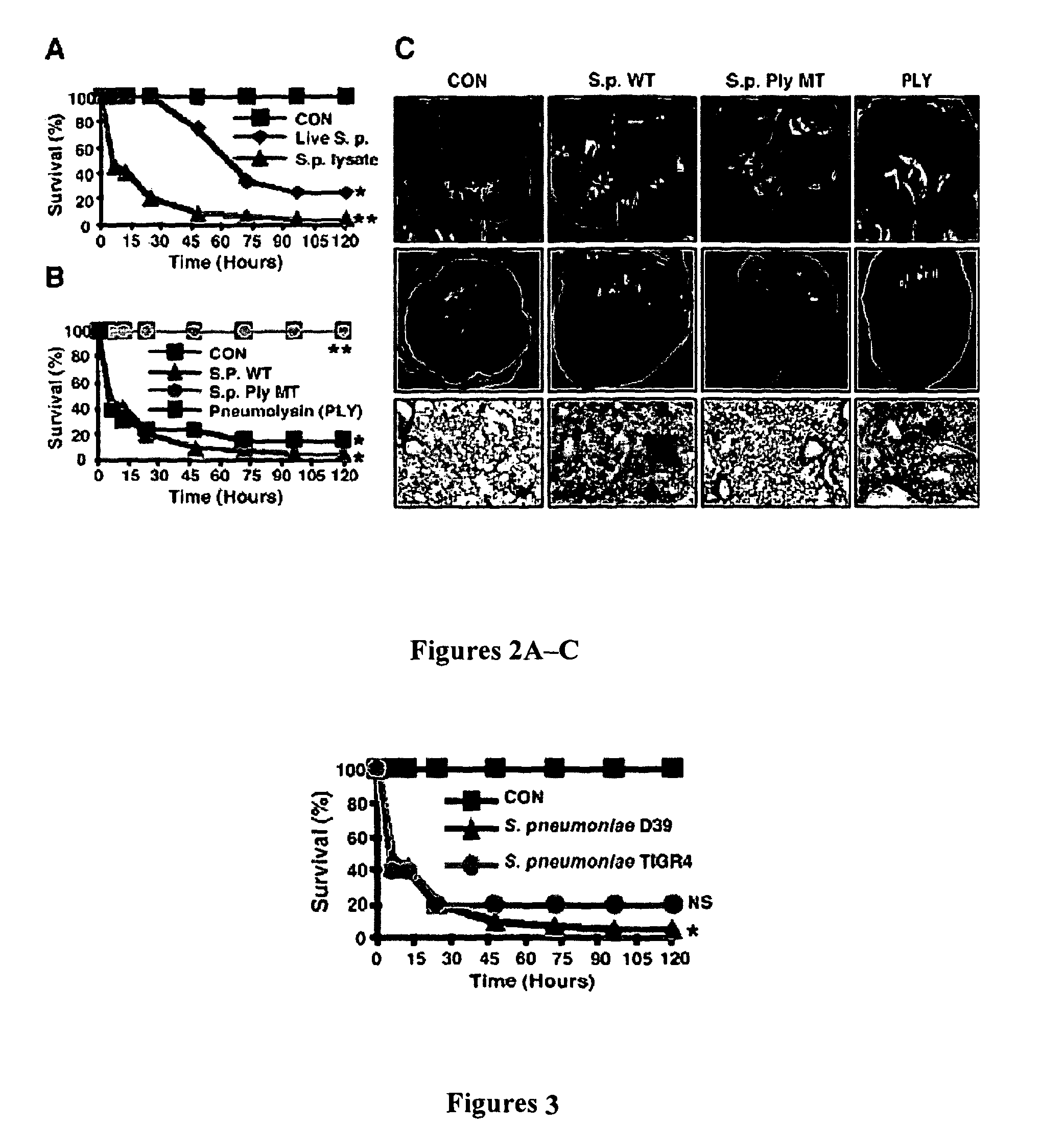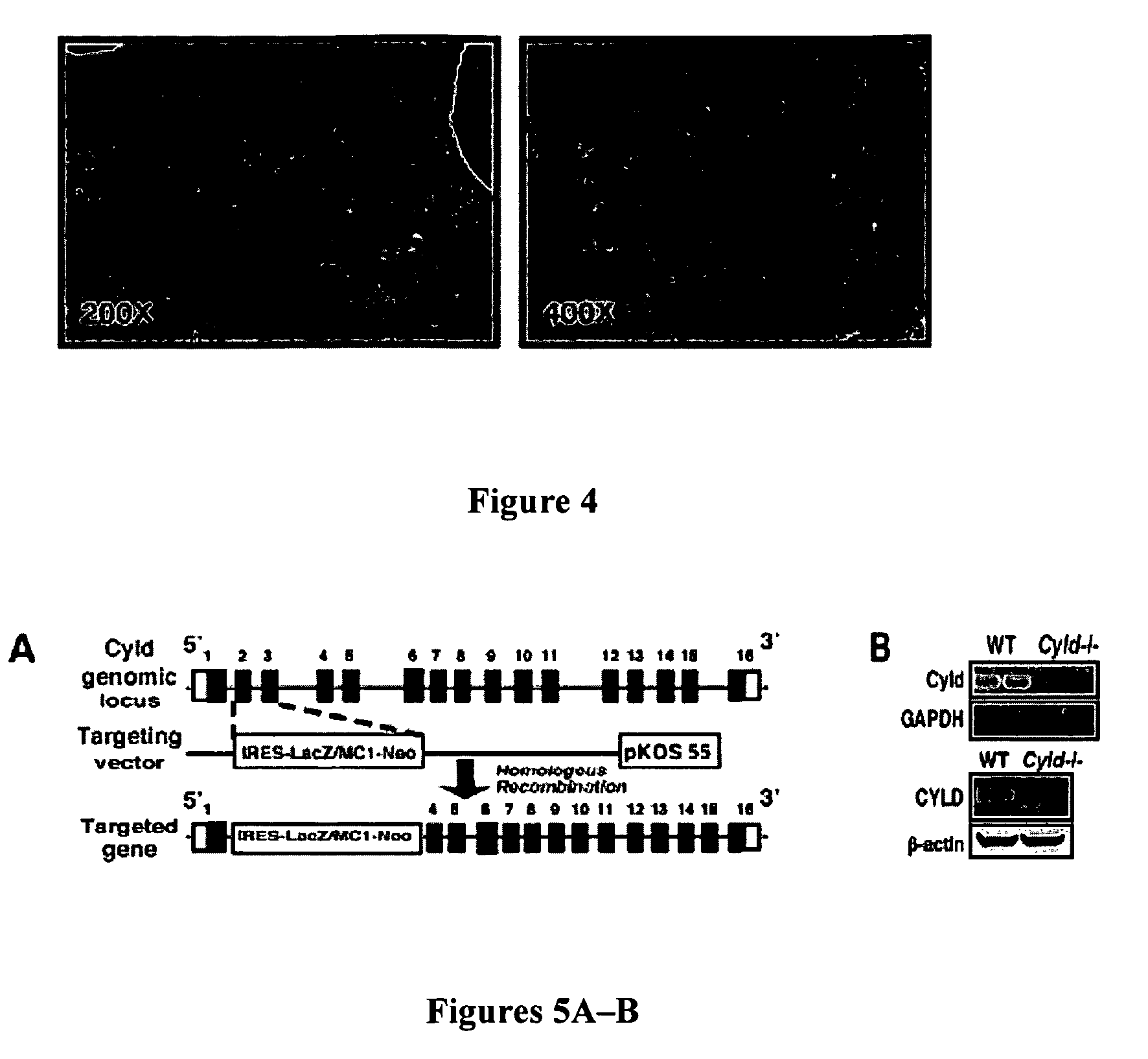Methods for the treatment or prevention of hemorrhagic conditions
a technology for hemorrhagic conditions and treatment methods, applied in the field of treating or preventing hemorrhagic conditions, can solve the problems of widespread lung injury, further hampered successful treatment of s.p.-induced pneumonia, and s.p.-induced pneumonia has been further hampered, so as to achieve potentiating ali and mortality, high early mortality, and high early mortality
- Summary
- Abstract
- Description
- Claims
- Application Information
AI Technical Summary
Benefits of technology
Problems solved by technology
Method used
Image
Examples
example 1
Reagents and Antibodies
[0118]SB203580, Wedelolactone, mouse recombinant PAI-1 (rPAI-1), and mouse α-PAI-1 neutralizing antibody MA-33H1F7 were purchased from Calbiochem (California, U.S.A). Antibodies anti-phospho-MKK3 / 6 (Ser-189 / 207), anti-phospho-p38 MAPK (Thr-180 / Tyr-182), anti-MKK3, anti-p38MPAK, HRP-conjugated anti-mouse IgG, and HRP-conjugated anti-Rabbit IgG were purchased from Cell Signaling Technology (Massachusetts, U.S.A). Anti-β-actin antibody was from Sigma-Aldrich (Missouri, U.S.A.). Anti-CYLD polyclonal antibody is described in Jono et al., “NF-κB Is Essential for Induction of CYLD, the Negative Regulator of NF-κB: Evidence for a Novel Inducible Autoregulatory Feedback Pathway,”J. Biol. Chem. 279:36171-4 (2004), which is hereby incorporated by reference in its entirety. Anti-PAI-1 polyclonal antibody, anti-TRAF6 antibody, and anti-ubiquitin antibody were from Santa Cruz Biotechnology.
example 2
Bacterial Strains and Cultures, Bacterial Lysate, and Pneumolysin
[0119]Clinical isolates of S. pneumoniae wild type strain D39 (serotype 2) (“WT”), strain TIGR4 (serotype 4), and a D39 isogenic mutant strain deficient in the pneumolysin gene (“Ply MT”) were used in the present Examples.
[0120]Bacteria were grown on chocolate agar or in Todd-Hewitt broth supplemented with 0.5% yeast extract (“THY”) at 37° C. in an atmosphere of 5% CO2. Stocks were maintained at −80° C. in THY plus 15% glycerol, and all cultures of each strain were grown from the same frozen stock. To determine the virulence factor(s) responsible for causing lung hemorrhage and lethality as well as for PAI-1 induction, S.p. live bacteria, lysate of both WT and Ply MT strains, and purified pneumolysin were used in all the experiments. In experiments using live bacteria, the epithelial cells were incubated with live S.p. at a concentration of 10 bacteria / cell (moi). For in vivo experiments, S.p. was intratracheally inocu...
example 3
Purification of Pneumolysin
[0121]Native pneumolysin (Srivastava et al., “The Apoptotic Response to Pneumolysin Is Toll-like Receptor 4 Dependent and Protects Against Pneumococcal Disease,”Infect. Immun. 73:6479-87 (2005), which is hereby incorporated by reference in its entirety) was used unless otherwise indicated. In addition, recombinant pneumolysin was also used to confirm the key results obtained from using the native pneumolysin. Similar to native pneumolysin, recombinant pneumolysin also induced up-regulation of PAI-1 expression, lung hemorrhage, and lethality. Native pneumolysin was purified according to Malley et al., “Recognition of Pneumolysin by Toll-like Receptor 4 Confers Resistance to Pneumococcal Infection,”Proc. Nat'l Acad. Sci. USA 100:1966-71 (2003), Paton et al., “Purification and Immunogenicity of Genetically Obtained Pneumolysin Toxoids and Their Conjugation to Streptococcus pneumoniae Type 19F Polysaccharide,”Infect. Immun. 59:2297-304 (1991), and Paton et al....
PUM
| Property | Measurement | Unit |
|---|---|---|
| optical density | aaaaa | aaaaa |
| concentration | aaaaa | aaaaa |
| pH | aaaaa | aaaaa |
Abstract
Description
Claims
Application Information
 Login to View More
Login to View More - R&D
- Intellectual Property
- Life Sciences
- Materials
- Tech Scout
- Unparalleled Data Quality
- Higher Quality Content
- 60% Fewer Hallucinations
Browse by: Latest US Patents, China's latest patents, Technical Efficacy Thesaurus, Application Domain, Technology Topic, Popular Technical Reports.
© 2025 PatSnap. All rights reserved.Legal|Privacy policy|Modern Slavery Act Transparency Statement|Sitemap|About US| Contact US: help@patsnap.com



